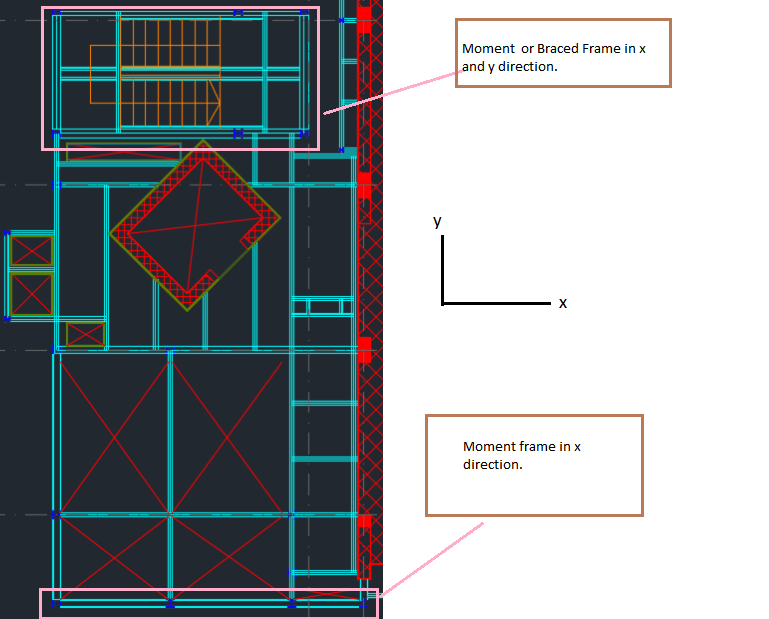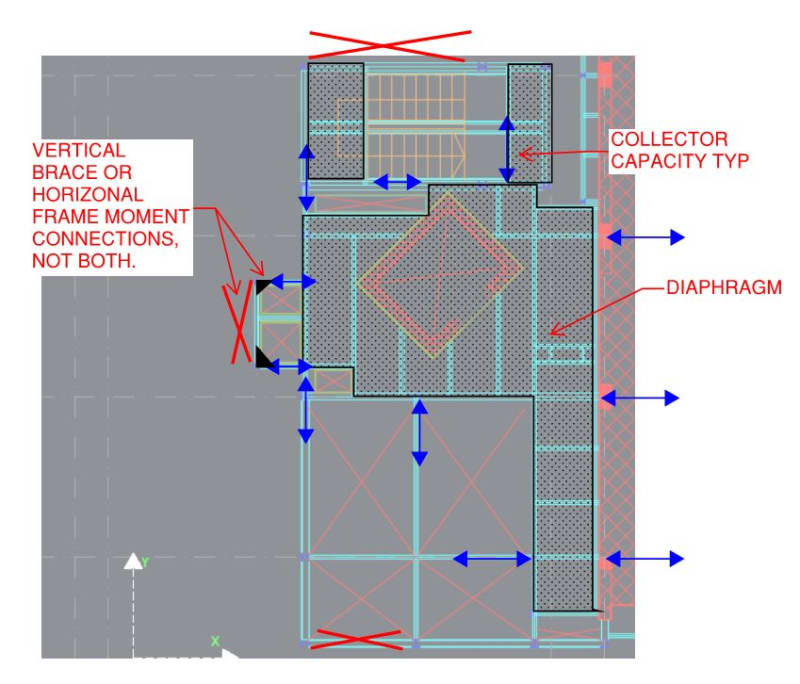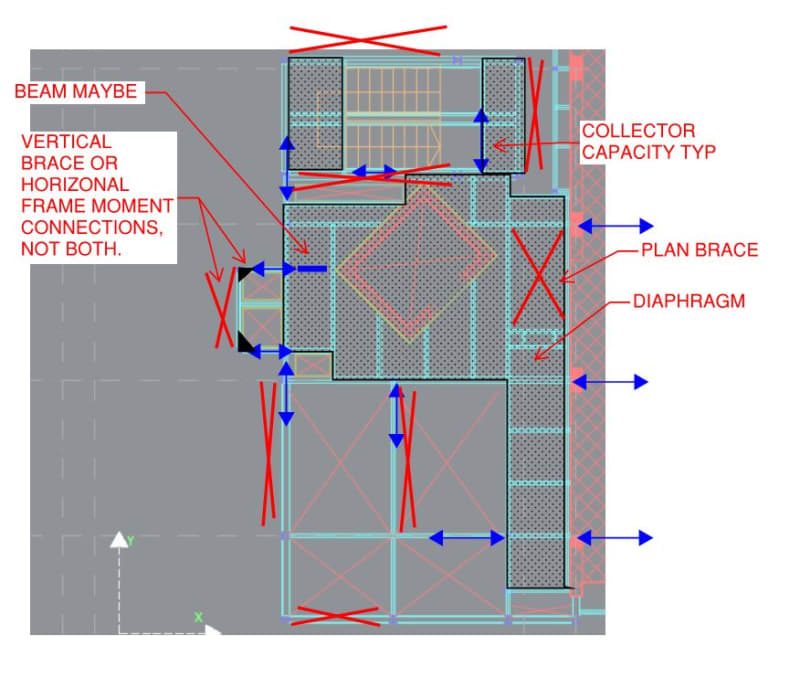tristan861
Structural
- Sep 14, 2015
- 77
Hello Guys
I have this steel structure plan view as the sketch shows. How do I handle with the lateral stability in this case?
As shown, in X direction most of the frames are supported by an existing concrete slab or shear wall. In Y direction some of members are supported by the shear wall.
Can I release the moment in all beams and consider this structure laterally stable without adding v.brace or making moment frames?
Or should I deal with each frame separately and change the beam to column connection to a moment connection where it is not supported on a rigid element?
Note: Base plates are pinned connected for all steel columns.
I have this steel structure plan view as the sketch shows. How do I handle with the lateral stability in this case?
As shown, in X direction most of the frames are supported by an existing concrete slab or shear wall. In Y direction some of members are supported by the shear wall.
Can I release the moment in all beams and consider this structure laterally stable without adding v.brace or making moment frames?
Or should I deal with each frame separately and change the beam to column connection to a moment connection where it is not supported on a rigid element?
Note: Base plates are pinned connected for all steel columns.




![[smile] [smile] [smile]](/data/assets/smilies/smile.gif)